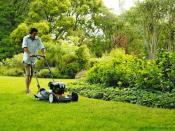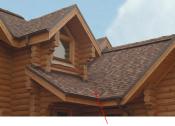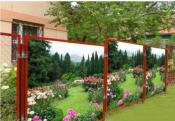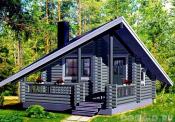Search
Login
Ornamental plants in the garden. Euonymus, how to choose the right, landing and care
Perennials and shrubs, whose leaves have a variegated color, are gaining popularity, which is understandable, because, unlike flowers, leaves have a longer decorative period, which is successfully used in decorative gardening and landscape design. Compositions in which decorative deciduous shrubs are present are characterized by stability and natural naturalness. If the decorative motley foliage is combined with eternal greenery, then the garden can be safely considered all-weather. A plant that meets all the above requirements is a spindle tree, which will be discussed in the article.
Content
- Spindle tree. History of the name. Taxonomy
- Decorative properties of euonymus. Main varieties video
- Landing euonymus. Preparatory Activities
- Propagation Features
- Care for euonymus. Pruning and watering, pest sensitivity
Spindle tree. History of the name. Taxonomy
The euonymus borrowed its distinguished name from mythology. According to legend, there was a formidable mother of the Furies Evonyme, by whose name Karl Linnaeus called the European euonymus, due to its toxic properties. A little later, a modified transcription of Euonymus was used, which is generally accepted at present.

It is surprising that, despite its high decorative properties and low selectivity to growing conditions, the richest genus of euonymus, numbering more than 220 species, about 130 of which are evergreen, did not receive due recognition among gardeners.

The euonymus is a taxonomic representative of the genus of evergreen shrubs, as well as low trees, which belong to the euonymus family and are common in tropical, subtropical and temperate zones of any continent. Shoots are usually tetrahedral in shape; cork growths can often be found along the ribs. The leaves are smooth, unremarkable flowers, combining in 4-5 pieces, form inflorescences, semi-umbrellas, which are almost invisible against the background of decorative leaves. The euonymus is very much appreciated in horticulture for a number of its decorative properties.
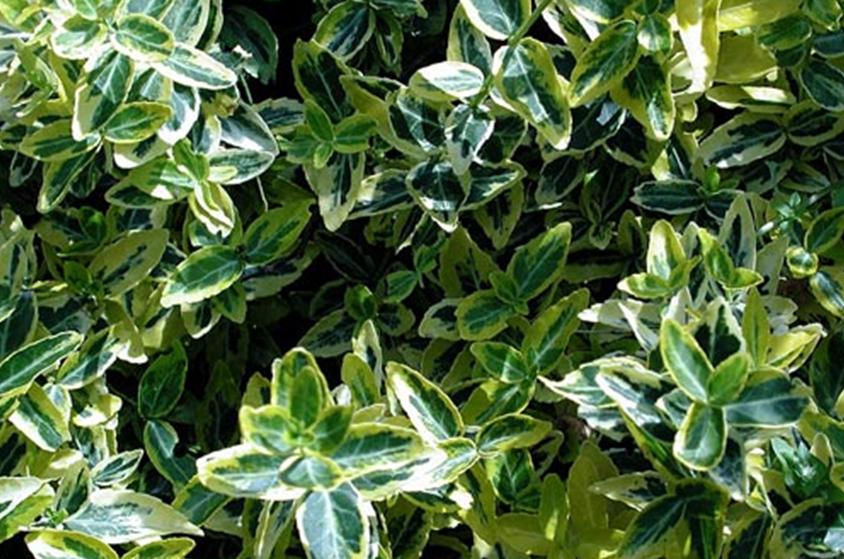
Decorative properties of euonymus. Main varieties
1. A dense crown, called in some sources openwork, as well as dense branching of shoots. Thanks to the combination of these properties, an original mosaic is created, the color scheme of which directly depends on the color scheme of the plant.
2. During the summer, the euonymus pleases the eye with dark green foliage, and with the beginning of autumn, everything changes dramatically; euonymus begin to transform, and the mosaic lights up with many colors.

3. The color change is extremely dynamic, throughout the week the euonymus manages to try on clothes of all colors of the rainbow: from yellow and orange to carmine and lilac shades.
4. The euonymus fruits have the appearance of a dry box of bright color, which, combining into garlands, play in contrasts with dark green foliage.

The plant has a wide species diversity.
The main varieties of euonymus are:
1. Japanese euonymus, brought to Europe at the beginning of the 20th century from the Far East, is currently grown as one of the ornamental plants. The view can reach a height of up to 1.5 meters, and the leaves have a pleasant blue-green hue.
2. European euonymus, the fruits of which are endowed with poisonous properties in connection with the content of alkaloids in them, and only therefore received the name on behalf of the mythical hero.

3. Fortune euonymus, recognized as a slow-growing shrub of small height and often used to form soil cover, as evidenced by its second name, the euonymus rooting. Like the vast majority of spruce bushes, it has historically grown in China and has a reputation as one of the most frost-resistant species.
4. Spindle tree warty shrub, the homeland of which is considered the temperate latitudes of Eurasia. It reaches a height of 3.5 meters. A characteristic feature of a warty spindle tree is black-brown warts covering young shoots.

And these are just a few of the main types. When choosing a particular variety, be guided by your taste preferences, as well as the features of the territory on which your site is located, which will guarantee the formation of the necessary conditions for the growth of an unassuming bush.
Landing euonymus. Preparatory Activities
Before planting the euonymus, it is necessary to familiarize yourself with the features of the species of interest, since each of them is characterized by a different attitude to light. If your site is located in partial shade, then among the overgrown trees, comfortable conditions will be created for the European and warty euonymus. If the shaded area is located on the border of the summer cottage, then the optimal solution would be to create a hedge, where the spindle tree of Sakhalin or the sacred will become a solo element. She will successfully decorate your personal territory.

A thorough preparation of the soil is considered an obligatory moment of planting, since euonymos are very demanding on the growth environment. Fertility of the soil, as well as its high level of aeration, are a prerequisite for optimal shrub growth. The preferred level of soil acid balance is neutral or alkaline.

Propagation Features
Propagation of euonymus is carried out mainly by vegetative means, which implies propagation by cuttings, dividing the bush or root layers. For grafting in June-July, it is advisable to choose strong young cuttings and cut up to 5 cm in length. In this case, you need to leave one internode and plant them in fertile soil that meets all the requirements for spawning of the spindle tree, and cover with a film. Then the greenhouse should be sprinkled with sand and calmly expect rooting, which will occur in 30-35 days.

It is extremely rare to resort to seed breeding of an euonymus in view of its complexity and laboriousness. The necessary stage of reproduction in this way is stratification, which must be carried out in coarse-grained, hot sand. If you neglect it, then seedlings can be expected only after a year. Stratification is carried out as follows: First, the seeds are mixed with sand in a ratio of 1: 2 and maintained for three months at a temperature of about 10 degrees above zero. After the shell of most seeds bursts, they need to be stored at a temperature of about 2-3 degrees for 4-5 months. To avoid the death of seeds they are treated with a solution of potassium permanganate. Only after carrying out all these procedures, the seeds are sown in a substrate that contains one part of the turf and sand, as well as two parts of humus and four leaf lands. In the future, you can expect the first shoots of euonymus. Planting and care also include the annual transplant of adult plants in the spring.

Care for euonymus. Pruning and watering, pest sensitivity
Care for euonymus consists in timely pruning and watering of the bush. Adult plants require 3-4 single watering per season, which is associated with the drying of the upper soil layers, young plants need abundant watering, especially in the dry period. Loosening of the soil must be done as the upper soil layer is compacted.

In order to ensure the formation of a dense crown that meets all the principles of decorativeness, an annual spring pruning and pinching of the shoots is required, which will ensure intensive branching. Weak and thickening shoots must also be removed; they are harvested throughout the growing season. Trimming can also be used for decorative purposes. By trimming, you can form a bush or a standard tree. In this case, it stimulates sleeping buds, from which a large number of young shoots are subsequently formed.

Diseases and pests affecting euonymus, apparently, are the only factor preventing the widespread distribution of euonymus in all areas of landscape design. Especially often, the bush is attacked by apple moths, hawthorns, aphids and other pests. Growing among fruit trees, the spindle tree is a kind of collector of pests that, nesting on it, do not damage nearby fruit trees. This is very convenient, as euonymus can be easily treated with any insecticide without damaging the crop.

